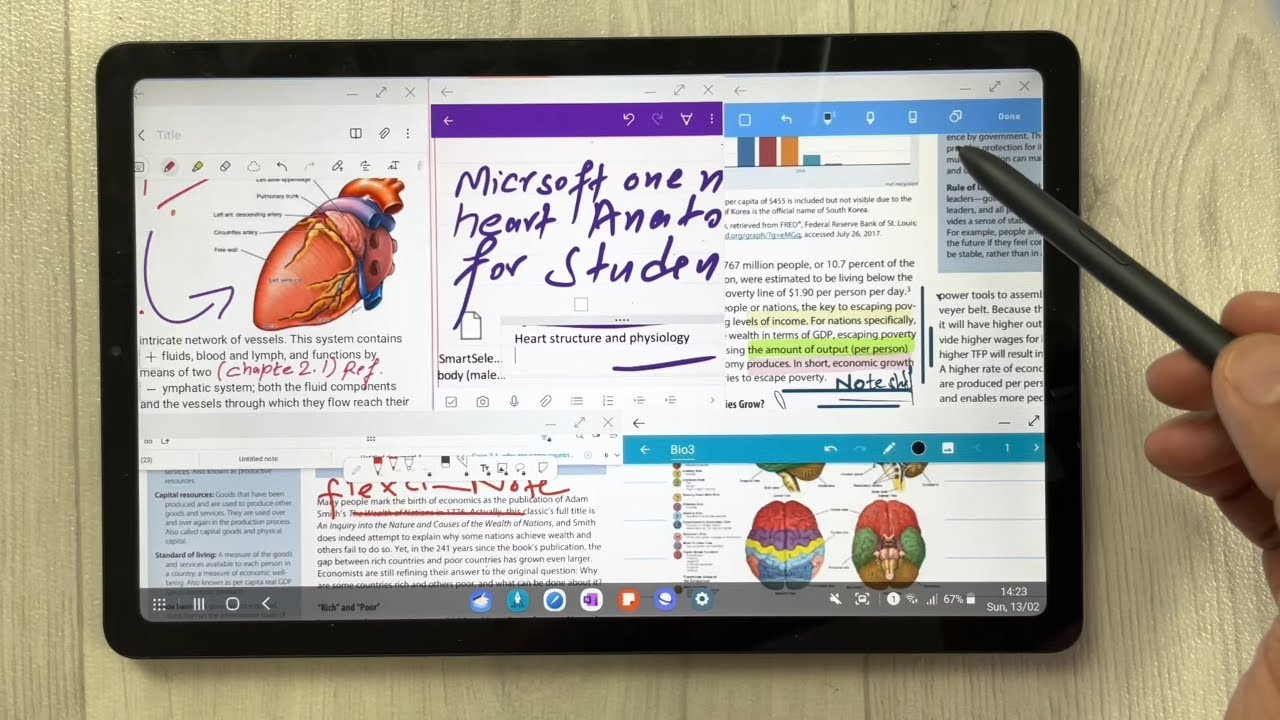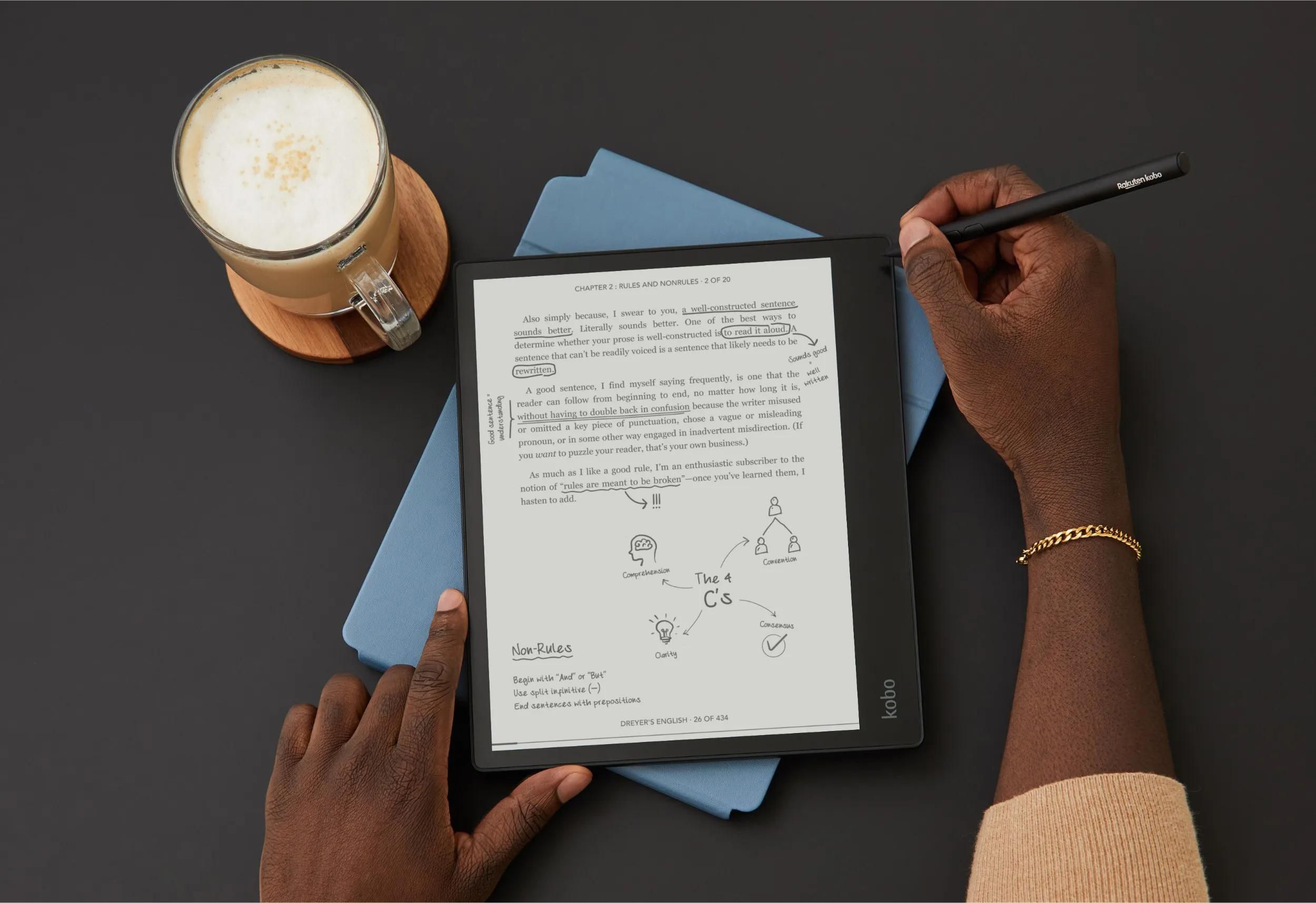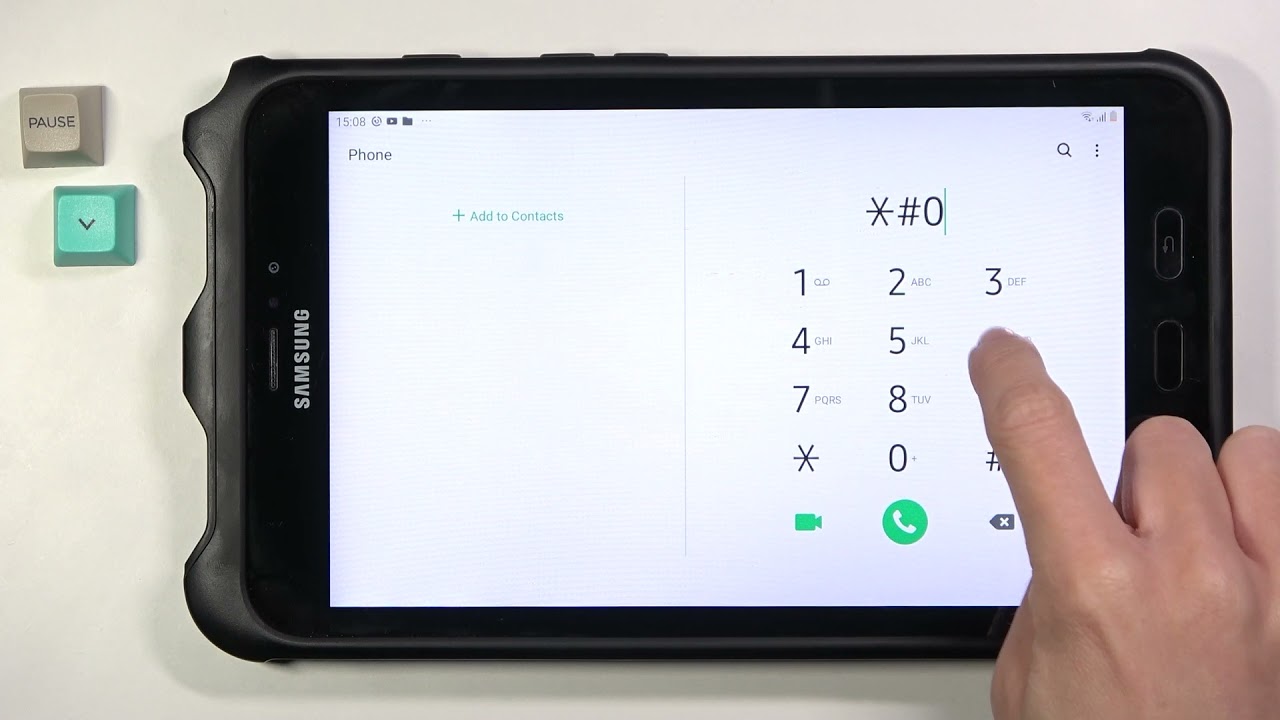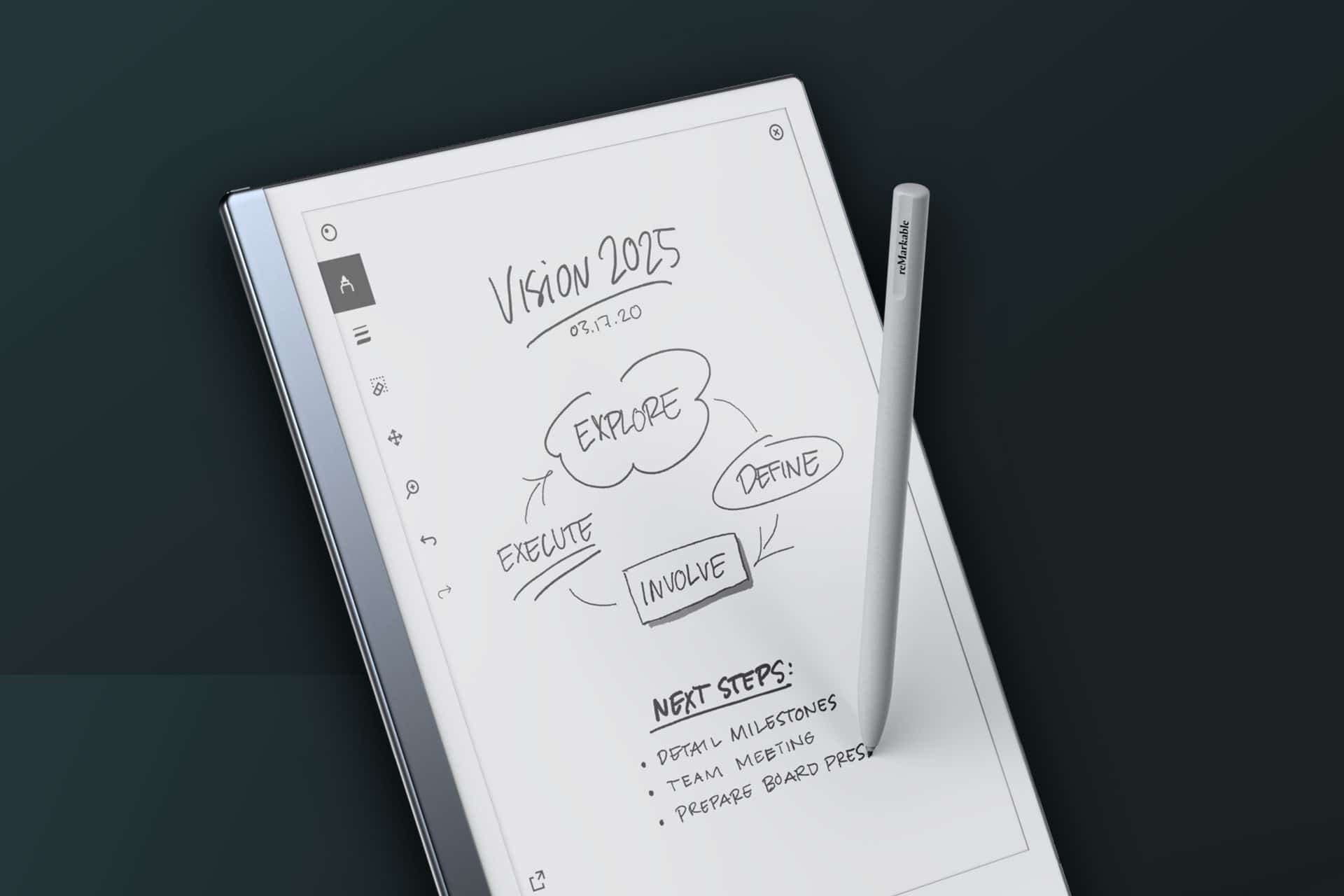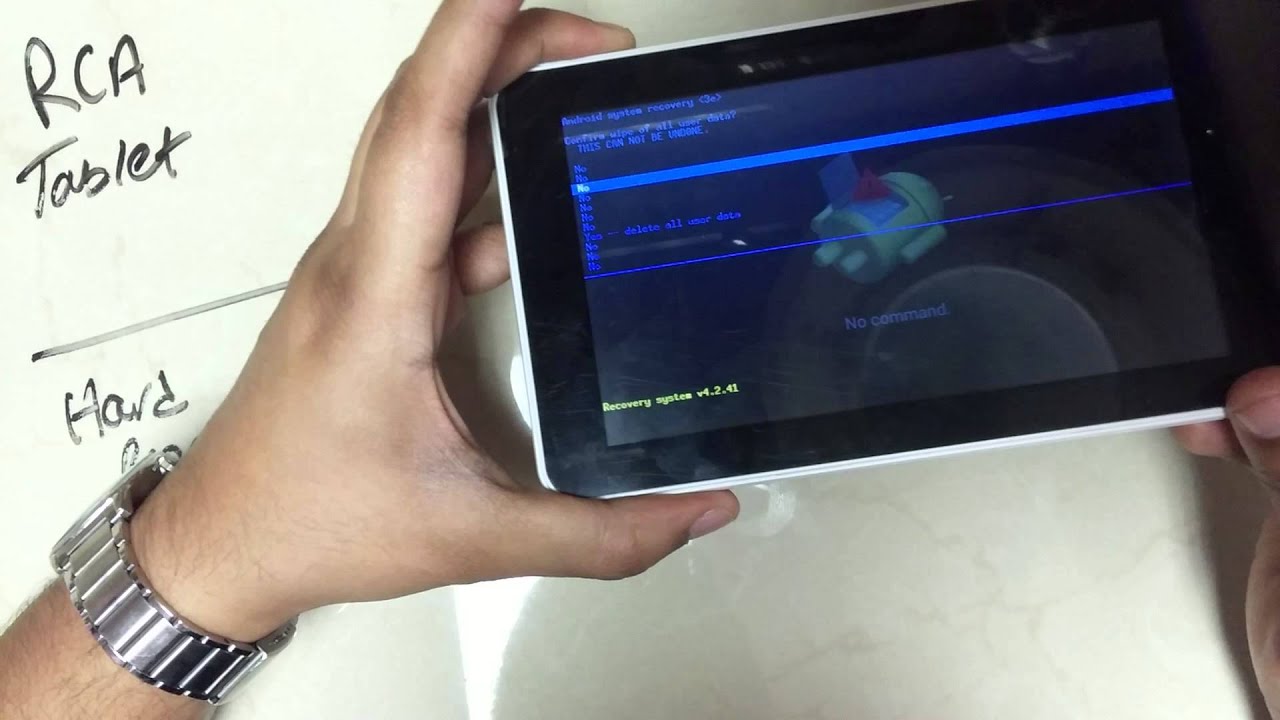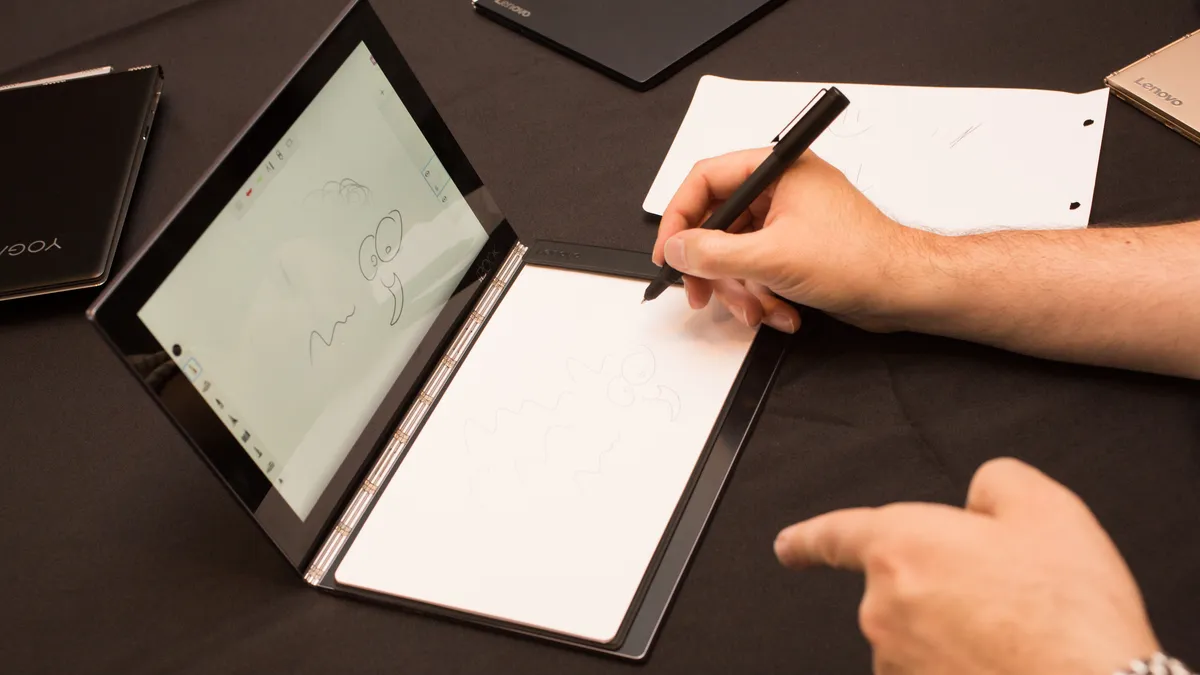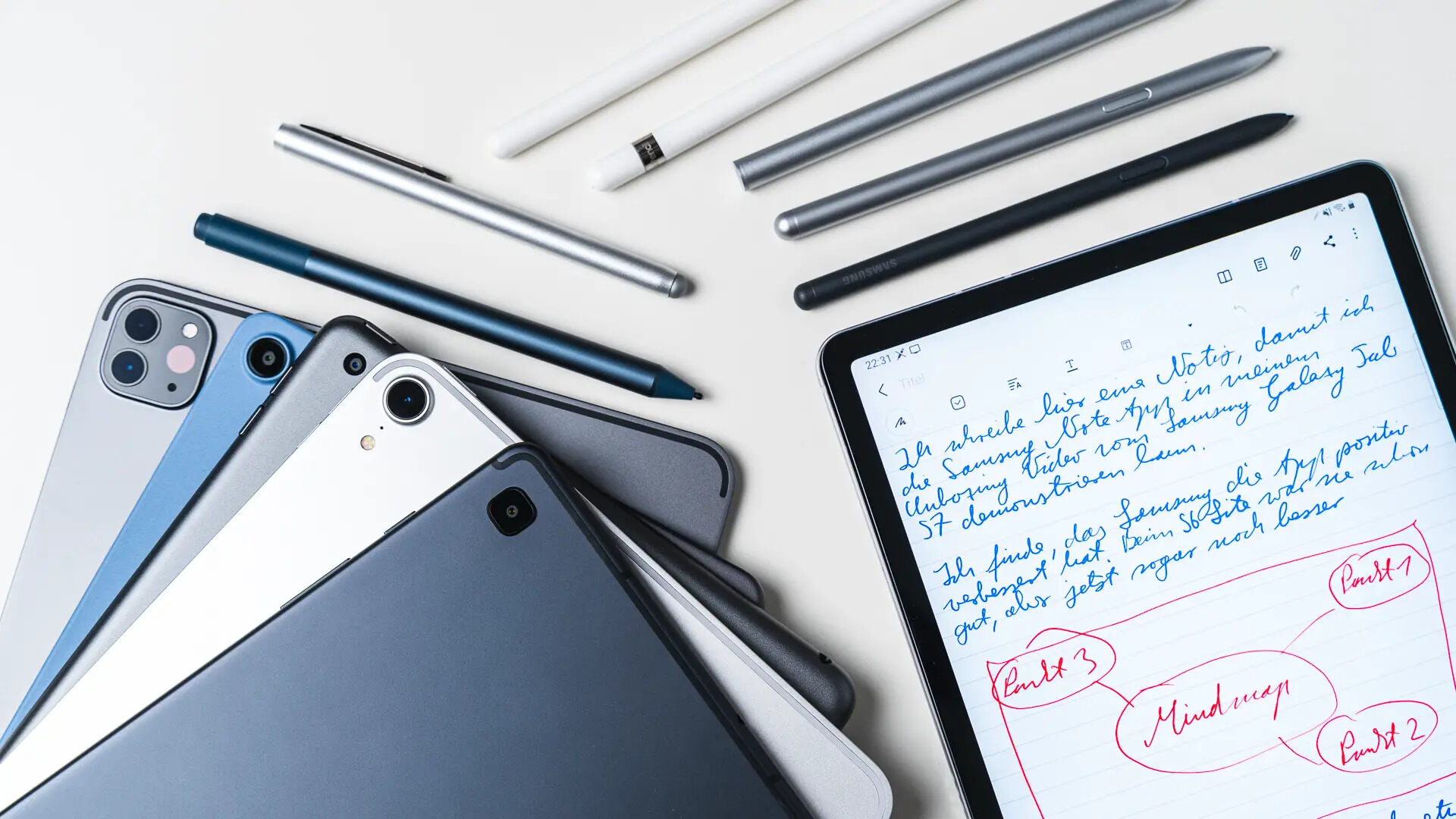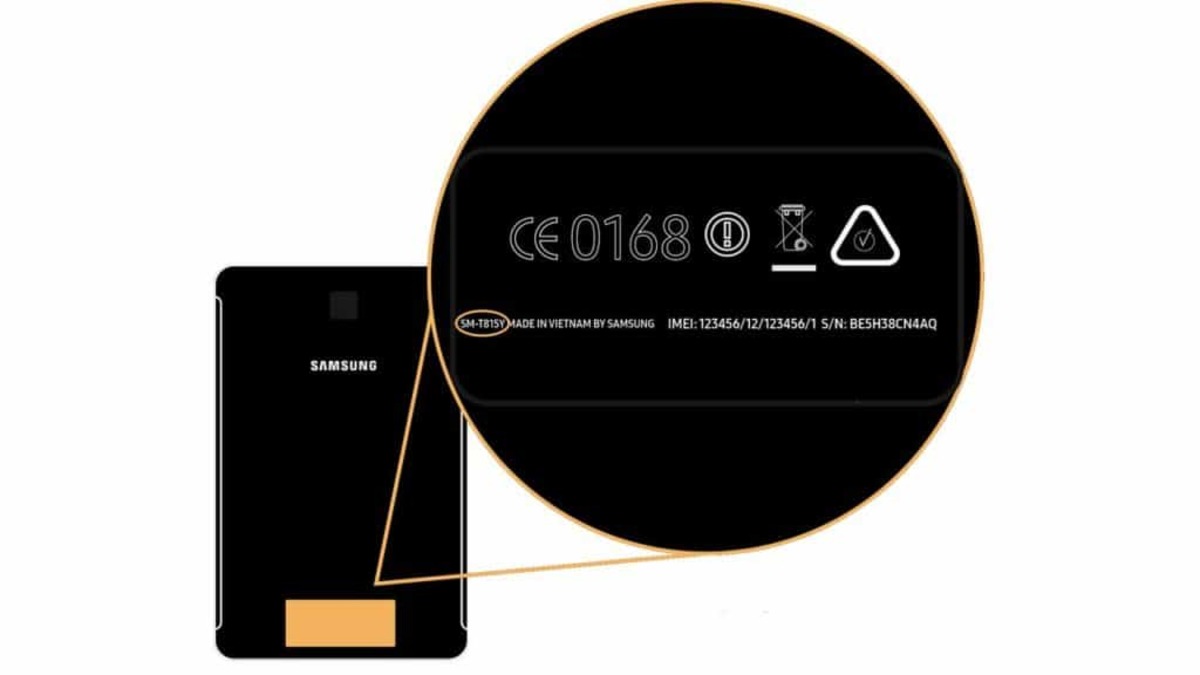Introduction
Welcome to the exciting world of note tablets! In this increasingly digital era, note tablets have become essential tools for both personal and professional use. These versatile devices offer a convenient way to take notes, sketch ideas, stay organized, and even entertain yourself on the go. Whether you’re a student, an artist, a business professional, or simply someone who enjoys technology, a note tablet can greatly enhance your productivity and creativity.
A note tablet is a portable electronic device that allows you to write, draw, and interact with content using a stylus or your fingers. It combines the functionality of a traditional paper notebook with the convenience and capabilities of modern technology. Note tablets come in various sizes, ranging from compact 7-inch models to larger 12-inch devices, giving you the flexibility to choose the one that suits your needs the best.
One of the key features of a note tablet is its touch-sensitive display, which enables you to write and draw directly on the screen. This provides a natural and intuitive writing experience, making it feel like you’re using pen and paper. The stylus, often referred to as a digital pen, offers precise control and pressure sensitivity, allowing you to create detailed drawings or take handwritten notes with ease. Some note tablets also support multi-touch gestures, making it easy to zoom, rotate, and navigate through documents and applications.
Note tablets have evolved beyond their basic note-taking functionality and can now perform a wide range of tasks. You can use them to annotate documents, create digital art, edit photos, sign contracts, read e-books, watch videos, play games, and much more. With the availability of various note-taking apps and cloud storage solutions, you can seamlessly sync your notes and sketches across multiple devices and access them from anywhere.
Whether you’re a student who wants to digitize your class notes, an artist looking for a portable canvas, or a professional needing a powerful productivity tool, a note tablet is an excellent choice. Its versatility, portability, and ease of use make it a valuable companion in your daily life. In the following sections, we will explore the different types of note tablets, their advantages, popular brands, and key features to consider when choosing one that suits your needs.
What is a Note Tablet?
A note tablet, also known as a digital note-taking device, is a portable electronic device that combines the functionality of a notebook and a tablet. It allows users to take notes, write, draw, and interact with content using a stylus or their fingers. Note tablets are designed to provide a seamless and intuitive writing experience, making them an ideal tool for students, artists, professionals, and anyone who wants to enhance their productivity and creativity.
Unlike traditional paper notebooks, note tablets feature a touch-sensitive display that enables users to write and draw directly on the screen. This eliminates the need for physical paper and provides a more eco-friendly and convenient solution for note-taking and sketching. The stylus, or digital pen, that comes with the note tablet offers precise control and pressure sensitivity, allowing users to create detailed drawings or write with the same level of accuracy as a pen on paper.
Note tablets come in various sizes, ranging from compact 7-inch models to larger 12-inch devices. The size you choose depends on your preferences and how you plan on using the device. Smaller tablets are more portable and easier to carry around, while larger tablets offer a larger canvas for drawing and note-taking.
In addition to note-taking, note tablets offer a wide range of features and functionalities. They can be used to annotate documents, create digital art, edit photos, sign contracts, read e-books, watch videos, play games, and much more. Many note tablets also support multi-touch gestures, allowing users to zoom in and out, rotate the screen, and navigate through applications with ease.
Another advantage of note tablets is their connectivity and synchronization capabilities. Most note tablets have WiFi or cellular connectivity, allowing users to access the internet, download apps, and synchronize their notes and sketches across multiple devices. This means that you can start taking notes on your tablet and continue working on them from your smartphone or computer seamlessly. Cloud storage solutions also make it easy to backup and access your notes from anywhere, ensuring that your work is always accessible.
Overall, note tablets offer a versatile and powerful tool for digital note-taking, sketching, and content interaction. Their intuitive writing experience, portability, and wide range of features make them an ideal choice for students, artists, professionals, and anyone looking to enhance their productivity and creativity.
How does a Note Tablet work?
A note tablet operates using a combination of hardware and software components to provide a seamless and interactive experience for users. Understanding how a note tablet works can give you insight into its functionality and help you make the most of its features.
At the heart of a note tablet is its touch-sensitive display, which allows users to write, draw, and interact with content. The display is typically an LCD or OLED panel that responds to the touch of a finger or a stylus. The touch response is achieved through capacitive or electromagnetic technology, which senses the electrical charge or the magnetic field generated by the stylus or the user’s fingers.
The stylus, or digital pen, is a crucial component of a note tablet. Equipped with sensors and pressure sensitivity, the stylus allows for precise and accurate writing and drawing. The tablet translates the inputs from the stylus into digital data, capturing each stroke and pressure variation, and displaying it on the screen in real-time. This gives users a natural and fluid writing experience, similar to pen and paper.
Behind the scenes, note tablets are powered by processors and memory that handle the processing of data and running applications. These components ensure smooth performance and allow users to multitask, run note-taking apps, and interact with various digital content seamlessly.
In terms of software, note tablets often come with preloaded note-taking apps or software suites specifically designed for writing, sketching, and organizing notes. These apps offer an array of tools and features, such as pen styles, colors, erasers, highlighters, and text formatting options, enabling users to customize their notes and drawings. Additionally, many note-taking apps support handwriting recognition, which can convert handwritten notes into editable text for easier organization and searchability.
Note tablets also offer connectivity options such as WiFi, Bluetooth, and sometimes cellular data, enabling users to access the internet, download apps, and synchronize their notes seamlessly across multiple devices. This allows for a consistent note-taking experience across different platforms, ensuring that your notes are always accessible, regardless of the device you are using.
Furthermore, note tablets often have integrated storage or support for external storage devices such as SD cards or USB drives, providing ample space for saving notes, sketches, documents, and other files. Cloud storage solutions are also commonly supported, allowing users to back up their notes and access them from any device with an internet connection.
In summary, note tablets combine hardware components such as touch-sensitive displays, styluses, processors, and memory with specialized software to offer a seamless and interactive note-taking experience. These devices allow users to write, draw, and organize their notes in a digital format, with the added flexibility of connectivity and synchronization options.
Different types of Note Tablets
Note tablets come in various types, each offering unique features and capabilities to cater to different user preferences and requirements. Understanding the different types available can help you make an informed decision when selecting a note tablet that suits your needs.
1. Entry-level note tablets: These are affordable options that provide basic note-taking functionalities. They typically have smaller display sizes, limited storage capacity, and fewer advanced features. Entry-level note tablets are suitable for casual users or individuals with budget constraints.
2. Mid-range note tablets: These tablets offer a balance between price and features. They often have larger displays, more storage options, and improved performance compared to entry-level tablets. Mid-range note tablets are suitable for students, professionals, and artists who require more advanced functionalities without breaking the bank.
3. High-end note tablets: These tablets are top-of-the-line devices that offer the most advanced features and specifications. They usually have larger, high-resolution displays with excellent color accuracy, powerful processors, ample storage, and additional features like fingerprint scanners or face recognition. High-end note tablets are ideal for professionals, artists, and enthusiasts who demand the highest level of performance and functionality.
4. Dedicated note-taking tablets: Some tablets are specifically designed for note-taking, with features tailored to enhance the digital note-taking experience. These tablets often have high-quality styluses with pressure sensitivity and low latency, offering a pen-on-paper-like writing feel. They may also incorporate specialized note-taking software or allow for seamless integration with popular note-taking apps.
5. Convertible tablets with note-taking capabilities: Convertible tablets, also known as 2-in-1 or hybrid tablets, offer the flexibility of being used as both a tablet and a laptop. These devices usually have detachable or flip-out keyboards and support stylus input. They are suitable for users who want the versatility of a tablet and the productivity of a laptop, making them ideal for students and professionals.
6. Large-format tablets: Large-format tablets have screen sizes of around 12 inches or more, providing a spacious canvas for drawing, note-taking, and multitasking. These tablets are favored by artists, designers, and professionals who require ample screen real estate for detailed work or the ability to view multiple apps or documents side by side.
7. Operating system-based tablets: Note tablets are available in various operating system options, including Android, iOS, and Windows. Each operating system offers its own set of features and compatibility with different apps and software. Consider your preferred operating system and its ecosystem before choosing a note tablet.
It’s important to note that within each type, there are numerous models and brands to choose from, each with its own unique features and specifications. Researching and comparing different models based on your specific requirements will help you find the perfect note tablet for your needs and preferences.
Advantages of using a Note Tablet
Note tablets offer a multitude of advantages compared to traditional pen and paper note-taking methods. Here are several key benefits of using a note tablet:
1. Portability: Note tablets are lightweight and compact, making them highly portable. You can carry your entire collection of notes, documents, and sketches with you wherever you go, eliminating the need for heavy bags or multiple notebooks.
2. Efficiency and Organization: Note tablets allow for easy organization and retrieval of notes. With digital note-taking apps and cloud storage solutions, you can quickly search for specific information, tag notes with keywords, and create folders or categories to keep your notes neatly organized.
3. Environmental Friendliness: By using a note tablet, you reduce paper waste and contribute to a more sustainable environment. You can eliminate the need for physical notebooks, thus minimizing your carbon footprint and promoting a paperless workflow.
4. Improved Collaboration: Note tablets enable seamless collaboration among users. You can easily share and collaborate on notes and documents with colleagues, classmates, or clients, eliminating the need for physical copies and providing real-time feedback and edits.
5. Digital Integration: Note tablets integrate well with other digital tools and software. You can synchronize your notes across multiple devices, seamlessly transfer them to your computer or smartphone, and even take advantage of features like handwriting recognition and audio recording for enhanced productivity.
6. Flexibility in Note-Taking: Note tablets offer flexibility in note-taking styles. You can choose from a variety of writing tools, colors, and styles to create visually appealing notes. Some note-taking apps also provide additional features like highlighting, underlining, and inserting multimedia content such as images and audio recordings.
7. Enhanced Creativity: For artists and designers, note tablets provide a canvas for digital art and illustrations. The pressure sensitivity of the stylus allows for precise and detailed drawings, while the ability to undo and redo strokes provides more freedom and experimentation.
8. Instant Access to Reference Material: With a note tablet, you can easily access reference material such as textbooks, articles, and online resources. This saves time and effort spent searching for physical copies or switching between multiple sources during research or studying.
9. Greater Storage Capacity: Note tablets offer ample storage space to save a large number of notes, documents, and media files. This eliminates the need for physical storage and ensures that your important information is always accessible and protected.
10. Convenience: Note tablets provide a convenient note-taking experience. You do not have to carry around a bundle of notebooks or worry about running out of paper. With a note tablet, you have everything you need in one compact device.
These advantages highlight the versatility, convenience, and efficiency that note tablets bring to the table. By embracing digital note-taking, you can streamline your workflow, harness your creativity, and improve your overall productivity in various aspects of life, be it academics, work, or personal pursuits.
Popular Note Tablet Brands
There are several note tablet brands that have gained popularity for their quality, innovation, and performance. These brands offer a range of options to cater to different user preferences and budgets. Let’s take a look at some of the popular note tablet brands:
1. Apple: Apple’s iPad Pro is renowned for its powerful performance, stunning display, and seamless integration with the Apple ecosystem. It offers a range of note-taking features, including the Apple Pencil, which provides precise and fluid drawing and writing capabilities.
2. Samsung: Samsung offers a wide range of note tablets, including the Galaxy Tab S7 and Galaxy Tab S7+. These tablets come with the S Pen, which is highly responsive and provides an excellent writing experience. Samsung tablets are known for their vibrant displays, multitasking capabilities, and support for external storage.
3. Microsoft: Microsoft’s Surface Pro and Surface Book series are popular choices for note-taking and productivity. These tablets are equipped with a detachable keyboard and support the Surface Pen, which offers exceptional accuracy and pressure sensitivity. Microsoft tablets run on the Windows operating system, providing a seamless integration with other Windows devices and programs.
4. Lenovo: Lenovo has established itself as a reputable brand in the note tablet market. Their Yoga Book series, such as the Yoga Book C930, combines a touch-sensitive display with a virtual keyboard and a stylus. Lenovo tablets are known for their versatility, innovative design, and long battery life.
5. Wacom: Wacom specializes in digital drawing tablets, including some models that can function as note-taking devices. Their tablets, such as the Wacom One and MobileStudio Pro, offer high levels of pressure sensitivity and accuracy, making them popular among artists and graphic designers.
6. Huawei: Huawei’s MatePad Pro series offers a sleek design, powerful performance, and compatibility with the Huawei M-Pencil. These tablets run on the Huawei EMUI interface and provide features like multi-window support and intelligent note-taking capabilities.
7. Google: Google’s Pixel Slate is a notable option for those seeking a lightweight and versatile note tablet. It supports the Pixelbook Pen for precise writing and drawing. Google’s tablets run on Chrome OS, allowing access to a wide range of Android apps and Google services.
These are just a few of the popular note tablet brands available in the market. Each brand offers its own unique features, specifications, and ecosystem. It’s essential to research and compare different models within these brands to find a note tablet that aligns with your specific needs and preferences.
Top Features to Consider When Choosing a Note Tablet
When selecting a note tablet, it’s important to consider various features that can enhance your note-taking experience and meet your specific needs. Here are some key features to consider when choosing a note tablet:
1. Display Quality and Size: Look for a note tablet with a high-resolution display that provides clear, vibrant, and accurate colors. Consider the size of the display as well, as it will affect the writing and drawing experience. Larger displays offer more space to work, but they may sacrifice portability.
2. Stylus and Pen Compatibility: Ensure that the tablet supports a stylus or pen that offers precise input, pressure sensitivity, and low latency. Check if the stylus is included with the tablet or if it needs to be purchased separately. Additionally, look for models that offer palm rejection technology to prevent accidental touch input while using the stylus.
3. Processing Power and Storage: Consider the tablet’s processing capabilities and storage capacity. A powerful processor ensures smooth performance when running note-taking apps and multitasking. Ample storage space allows you to save a large number of notes, documents, and media files.
4. Battery Life: Look for a note tablet with long battery life to ensure you can use it throughout the day without constantly needing to recharge. Consider tablets with fast charging capabilities for added convenience.
5. Connectivity Options: Consider the connectivity options the tablet offers. Look for WiFi and Bluetooth capabilities for seamless data transfer and internet connectivity. Cellular data support may be important if you need to stay connected while on the go.
6. Operating System: Decide on the operating system that best suits your needs and preferences. Popular options include Android, iOS, and Windows. Each operating system has its own ecosystem and app availability, so make sure it aligns with your requirements.
7. Additional Features: Research and compare the additional features offered by different tablets. These may include water resistance, expandable storage options, front and rear cameras, face or fingerprint recognition, and compatibility with accessories like keyboards or stands.
8. Note-taking Software and App Compatibility: Consider the note-taking software or apps available for the tablet. Look for compatibility with popular platforms like Microsoft OneNote, Evernote, or Google Keep. Research the availability of features like handwriting recognition, text conversion, and audio recording for improved productivity.
9. Price and Value: Set a budget and consider the value you will get from the tablet in relation to its price. Compare the features, performance, and reliability of different models to find the best balance between price and functionality.
10. User Reviews and Feedback: Lastly, read user reviews and feedback to gain insights from other users’ experiences. It can provide valuable information about the tablet’s performance, durability, and overall user satisfaction.
By considering these key features, you can narrow down your options and select a note tablet that fits your specific requirements and provides an optimal note-taking experience. Remember to prioritize the features that are most important to you while taking into account your budget and intended use for the tablet.
Comparison of Note Tablets and Other Devices
When it comes to digital note-taking and productivity, there are various devices available in the market. Let’s compare note tablets with other devices to understand their unique advantages and disadvantages:
1. Note Tablets vs. Laptops: Note tablets offer portability and versatility, making them suitable for taking notes and sketching on the go. Laptops, on the other hand, provide more processing power, a physical keyboard, and a larger screen for tasks such as content creation, coding, or extensive document editing.
2. Note Tablets vs. Smartphones: Note tablets offer a larger screen and more comfortable writing experience compared to smartphones, making them ideal for detailed note-taking and drawing. While smartphones are more portable, they may not provide the same level of precision or screen real estate for extensive note-taking.
3. Note Tablets vs. Traditional Paper and Pen: Note tablets eliminate the need for physical paper, allowing for a more eco-friendly approach to note-taking. They also offer the ability to store, search, and organize notes digitally. Traditional pen and paper, however, provide a tactile experience and do not require battery charging or device connectivity.
4. Note Tablets vs. E-Readers: Note tablets often offer e-reading capabilities, allowing you to read and annotate e-books. Dedicated e-readers, such as Kindles, are designed specifically for reading and provide a more comfortable reading experience with e-ink technology and long battery life. However, note tablets offer more versatility and functionality beyond reading, with the ability to take notes, access the internet, and run various applications.
5. Note Tablets vs. Digital Drawing Tablets: Note tablets are designed for both note-taking and drawing, offering features like pressure sensitivity and palm rejection. Digital drawing tablets like Wacom or Huion devices focus primarily on drawing, providing a more advanced range of pressure sensitivity and accuracy for artists and designers.
6. Note Tablets vs. Traditional Graphic Tablets: Traditional graphic tablets require connection to a computer, while note tablets are standalone devices. Note tablets allow for portable note-taking and drawing without the need for an additional computer. However, traditional graphic tablets often provide more advanced features and customization options for professional digital artists.
7. Note Tablets vs. Dedicated Note-taking Devices: Some devices, like the reMarkable tablet, are specifically designed for note-taking. These devices offer a specialized e-ink display and excellent note-taking features. However, note tablets provide a more versatile experience with additional functionalities, such as web browsing, media consumption, and app access.
When choosing between note tablets and other devices, consider your specific needs, preferences, and usage scenarios. Note tablets excel in their balance of portability, versatility, and note-taking capabilities. They offer a comprehensive solution for digital note-taking and organization, while still providing access to a wide range of apps and features. However, if your requirements lean more towards extensive content creation or specialized drawing needs, dedicated laptops, graphic tablets, or e-readers may be more suitable options.
Conclusion
Note tablets have revolutionized the way we take notes, draw, and interact with content. With their portable and versatile nature, note tablets offer a plethora of benefits that traditional pen and paper methods cannot match. They provide a seamless digital note-taking experience, allowing for easy organization, enhanced collaboration, and efficient access to information.
Whether you’re a student, artist, professional, or simply someone who enjoys the convenience of digital technology, a note tablet can greatly enhance your productivity, creativity, and overall digital experience. With features like precise stylus input, pressure sensitivity, and a variety of note-taking apps, note tablets offer a natural and intuitive writing experience with the added advantages of digital integration, cloud storage, and synchronization.
When choosing a note tablet, consider factors such as display quality and size, stylus compatibility, processing power, storage capacity, battery life, connectivity options, and note-taking software. Additionally, researching popular brands and user reviews can help you find the perfect tablet that meets your specific needs and preferences.
While note tablets may not entirely replace traditional pen and paper, their convenience, portability, and versatility make them a valuable addition to your digital toolkit. By embracing digital note-taking, you can boost your productivity, reduce environmental impact, and unlock new creative possibilities.
So, whether you need a device for taking notes in class, sketching your masterpieces, or staying organized in your professional life, a note tablet can be your trusted companion. Explore the variety of options available, consider the features that matter most to you, and embark on your note-taking journey with a digital twist!







